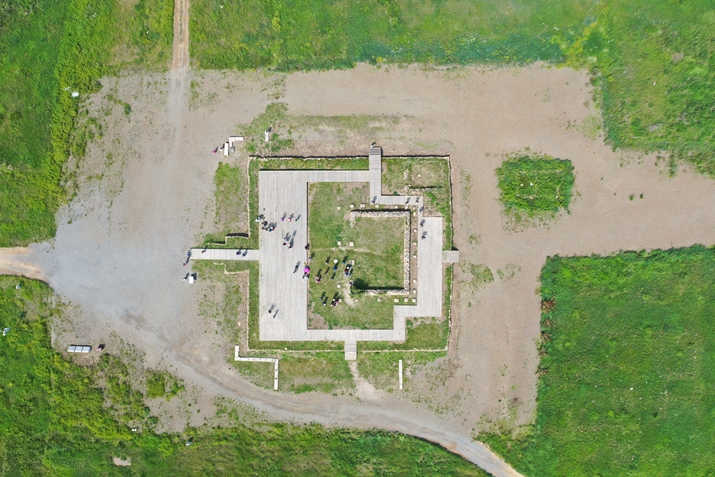Xanadu was the first capital of Mongol ruler Kublai Khan, Emperor Shizu of the Yuan Dynasty (1271-1368) and grandson of Genghis Khan. Later he began construction of a second capital on the site we now know as Beijing. Built upon the rubble of the former Jin Dynasty (1115-1234) capital, the new city became Kublai's primary capital, and Xanadu his summer retreat.
In June 2012, Xanadu was included on the UNESCO World Heritage List for its historical importance and its unique blend of Mongolian and Han Chinese cultural elements.
The ruins and remains of palaces, temples, walls, tombs, a canal, and nomadic encampments are scattered across the present-day site of Xanadu. They exist with far greater clarity in the mind's eye than they do in the visual reality. To this very day, or at least to that one summer day when this author visited Xanadu, the area oozes with the mystique of a splendid imperial luxury long gone, and hums the tunes of easy living and lavish entertaining. Grassy mounds and crumbling walls aside, you can unleash your inner Marco Polo by using your imagination and allowing your mind to wander.
On that historical note: Polo, the Venetian explorer and merchant, in his famous work, The Travels of Marco Polo (1298), includes a snippet on his special, gilt-laden experience in Xanadu.
Back to the 21st century, as I made my way through the entrance of the ruined city, I could imagine the ancient city walls towering over both the foundations and also my tiny self. On entering, I could immediately envisage the mighty presence of the soaring bronze statue of Kublai Khan still standing proud. The combination of these two towering sights is a reminder of the prosperity that once engulfed these grasslands—or prairies.
Moving along from the ruins, you will find yourself passing through the blossoming wonderland that is the Jinlianchuan Prairie, literally the Globeflower Prairie. Every July and August, the entirety of this emerald green grassland is decorated with a carpet of golden globeflowers rolling out as far as the eye can see. Wander through the flowers, using your senses to take in the delights, or go horse riding across the prairie. Admittedly, due to a sense of fear, I did not go riding; my friends, however, did gladly gallop around.
Truth be told, ruins and grasslands do have their limits when it comes to your (or "my") entertainment as a tourist. Though I did not spend an entire day gazing at the different gates within the ruins and roaming across the plains, what did stand out for me was just how this area, one millennium after its prime, still speaks to the imagination. It offers a condensed picture of the former grandeur of the Yuan Dynasty and imprints onto the enquiring eye the unflinching power of the Mongol Empire at large.
Enfolding sunny spots of green, a pleasure dome, this truly must have been.















